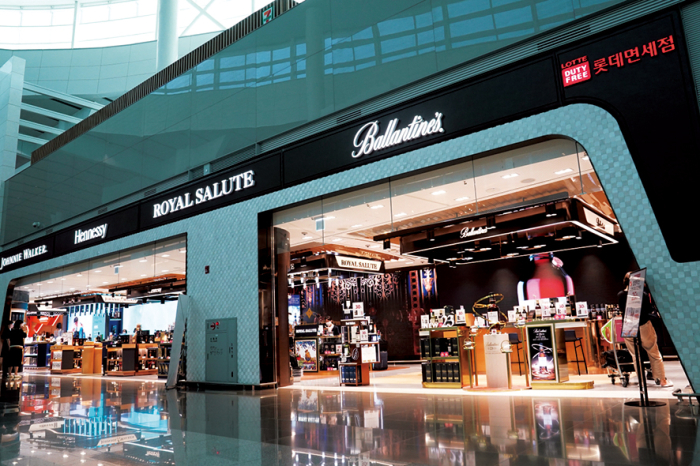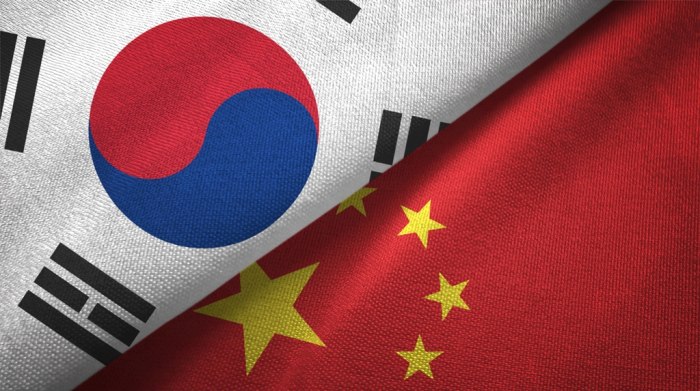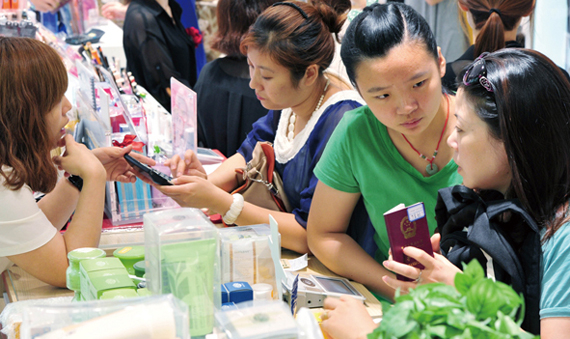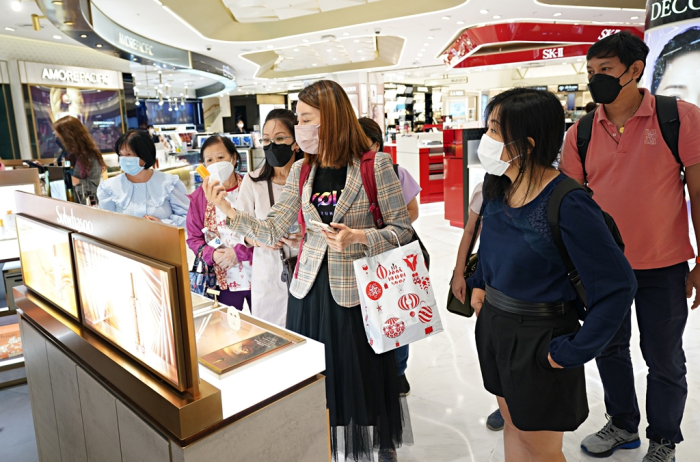Retail
Korea’s tourism industry pins high hopes on return of Chinese big spenders
After a six-year hiatus, China’s group tourists are expected to come back to Korea with big money in hand
By Aug 10, 2023 (Gmt+09:00)
3
Min read
Most Read
LG Chem to sell water filter business to Glenwood PE for $692 million


KT&G eyes overseas M&A after rejecting activist fund's offer


Kyobo Life poised to buy Japan’s SBI Group-owned savings bank


StockX in merger talks with Naver’s online reseller Kream


Meritz backs half of ex-manager’s $210 mn hedge fund



BEIJING – China’s official announcement to lift its ban on group tourists’ travel to South Korea will likely be a boon for the travel and duty-free industries in the neighboring country.
The Chinese government said on Thursday it is lifting its ban on group tours to Korea, Japan and the US after a six-year hiatus.
China has excluded those countries from the list of its overseas destinations for its people’s group tours amid diplomatic tensions with these countries, hitting Korea’s tourism industry particularly hard.
While the number of inbound foreign tourists to Korea has been increasing post-pandemic, the lack of Chinese tourists has dealt a heavy blow to Korea’s tourism industry.
Chinese tourists, particularly group travelers, are big spenders – spending three times more than individual tourists, Korea’s tourism data showed.

STRUGGLING TRAVEL AGENCIES, DUTY-FREE SHOPS
With the expected removal of China’s group tour ban, Korea’s struggling travel agencies and duty-free shop operators are now pinning high hopes on those big spenders.
According to the Korea Tourism Organization, inbound foreign tourists stood at 4.43 million in the first half, a fivefold increase from 810,000 people in the year-earlier period.
Still, the latest figure is about half the 8.44 million foreign tourists to Korea seen in the pre-pandemic period of 2019. The decline was largely due to the absence of Chinese group tourists.
China’s group travelers had been among the top foreign visitors to Korea up until the onset of the pandemic, which blocked almost all trans-border movements.
In the post-pandemic era, the number of China’s individual tourists has been on the ascending trend again.
According to the Korean embassy in China, the number of visas it issued to Chinese nationals reached 114,109 in June, surpassing the 112,170 visas issued in June 2019.
Compared with the same month last year, visa issuance posted a 12-fold increase.
Nevertheless, Korea’s tourism industry didn’t see any significant improvement in its sales because of the group travel ban.

JEJU, RITE OF PASSAGE FOR CHINESE TOURISTS
For Chinese group tourists, a visit to a Korean duty-free shop is a kind of rite of passage.
While individual travelers tend to travel on a budget, Chinese visitors in group tours often snap up a bundle of duty-free cosmetics and bags to resell them to Chinese locals for profit.
“Individual Chinese travelers on average spend one-third that of group tourists,” said a duty-free shop employee in Seoul.
Data from the Korea Duty-Free Shops Association showed that domestic duty-free shops’ sales were 854.3 billion won ($649 million) in June, down 8.9% from 938.1 billion won the month prior.
Their sales figures have been sliding for a third consecutive month since April.
“Without the return of Chinese group tourists, you can’t make money,” said a local duty-free shop operator.

Korea’s southern resort island of Jeju has traditionally been the top destination for China’s individual and group tourists.
In the first half, the number of foreign visitors to Jeju stood at 213,927 – about a third of the foreigners seen in the first half of 2019.
The number of Chinese tourists visiting Jeju in particular has significantly declined to 79,409 in the first half of this year from 456,359 three years earlier.
Korea’s tourism industry officials said it would take about a month to see a return of China's group tourists to Korea following the lifting of the ban.
“Due to China’s guochao (patriotic consumption) movement, the return of Chinese group tourists may not bring as much fortune as expected,” said a Korean travel agency official.
Guochao, a combination of the Chinese word “guo,” meaning nation and “chao,” meaning fashion, has become an industry buzzword in recent years, as Chinese millennials born between 1980-95 and Generation Z born between 1995-2010 became its main followers.
In the past, anything “Made in China” was dismissed with negative connotations of poor quality.
But Chinese youth, born and raised when the country’s economy and wealth were taking off, have embraced the new mix of contemporary design and nostalgic cues offered by China’s domestic brands, also of high quality.
Write to Mi-Kyoung Lee and Ji-Hoon Lee at capital@hankyung.com
In-Soo Nam edited this article.
More to Read
-
 RetailKorea’s duty-free sales skid despite China border reopening
RetailKorea’s duty-free sales skid despite China border reopeningAug 02, 2023 (Gmt+09:00)
2 Min read -
 Beauty & CosmeticsHeyday over for Amorepacific, LG Household in China’s beauty market
Beauty & CosmeticsHeyday over for Amorepacific, LG Household in China’s beauty marketJun 26, 2023 (Gmt+09:00)
3 Min read -
 RetailHotel Shilla to challenge Lotte’s duty-free shop dominance in Korea
RetailHotel Shilla to challenge Lotte’s duty-free shop dominance in KoreaApr 28, 2023 (Gmt+09:00)
3 Min read -
 RetailFila Korea: Hidden beneficiary of China’s guochao fashion trend
RetailFila Korea: Hidden beneficiary of China’s guochao fashion trendApr 08, 2022 (Gmt+09:00)
3 Min read
Comment 0
LOG IN


